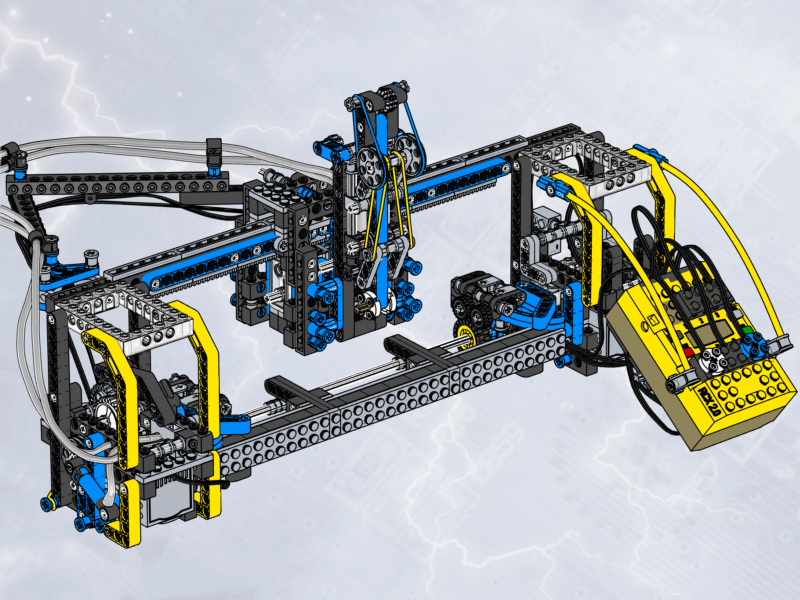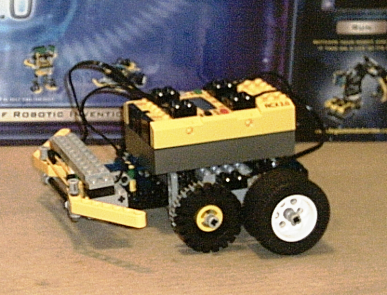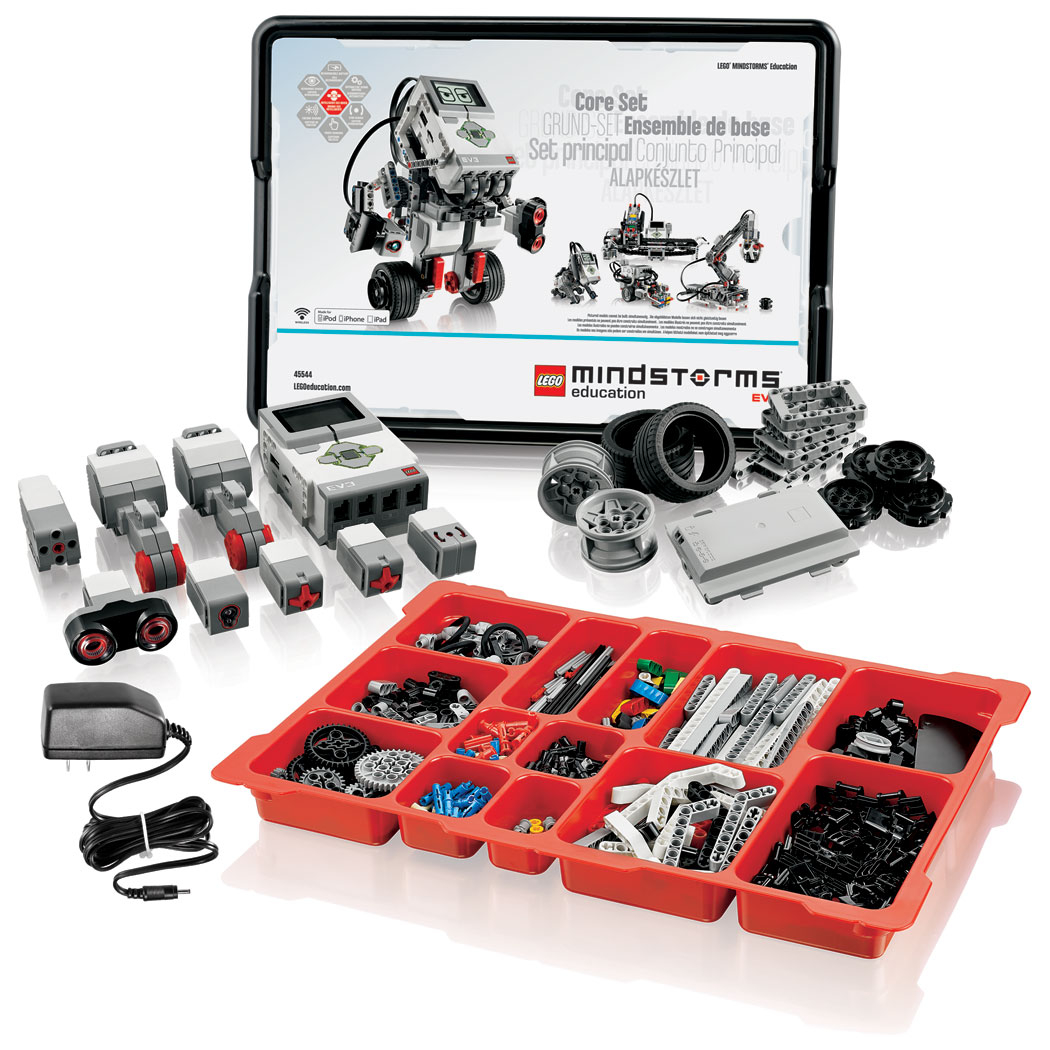- Lego Robotics App
- Lego Mindstorms Invention System 2.0 Software Download
- Lego Robotics Invention System 2.0
Since its introduction in 1998, the LEGO® MINDSTORMS® programmable robotics sets have become one of the most widely-loved products in our history. Garnering worldwide acclaim, the Robotics Invention System™ has fueled the imaginations and satisfied the inner tinkerer of generations of LEGO and robotics enthusiasts alike. This year Lego has once again updated the set and Robotics Invention System 2.0 can now be found on store shelves (set #3804). The changes between RIS 1.5 and RIS 2.0 are described below. The RCX is a computerized Lego brick that is the brains behind any RIS creation. The RCX in RIS 2.0 is nearly identical to those found in earlier sets.
This blog post is specifically for installing Robolab Lego RCX on Windows 7, Windows 8 and Windows 8.1…
Installing Lego RCX Windows 10, Windows 7, Windows 8 or Windows 8.1 can be very easily defined in these short steps.
- Obtain your copy of the Longbow Reviverhere
- Using Windows Explorer, copy your Lego RCX CD to c:RobolabCD
- Rename the PC-Install.exe to setup.exe
- Now, start the Longbow Reviver tool, on the “Old Installer Reviver” tab click the “Disable Windows 64bit Device Driver Signing Verification” checkbox, so that it is set.
- Now reboot.
- When your computer has started up again, start the Longbow Reviver tool again, select the “Old Installer Reviver” tab, pick the c:RobolabCD folder then click the Fix and Run Old Installer button.
- Once the conversion process is complete, the Robolab installer dialog will appear. Simply install as normal to the normal c:Robolab folder.
- Once the installation process is complete, make sure you fully quit the Robolab installer then switch back to the Longbow Reviver tool, select the “Old Program Reviver” tab, pick the newly installed c:Robolab folder, then click Fix Old Program
- Your Robolab Lego RCX is now ready for use.
LEGO Powered Up is an interface for next-generation electronic and programmable products. It was introduced in 2016 with #45300 WeDo 2.0 Core Set, a simple education-focused product for younger builders (which includes just one motor and two sensors).
In the years since, they have expanded their offering to include the consumer facing #17101 Boost Creative Toolbox (2017) and #75253 Droid Commander (2019) sets, both aimed at younger ages (7+ and 8+ respectively). For older audiences (Ages 10+) they offer the #45678 LEGO Education SPIKE Prime Set (2020) and the new #51515 LEGO MINDSTORMS Robot Inventor.
In recent years, they have also introduced simpler Bluetooth-connected products as part of their LEGO Technic and LEGO System product lines, which allow you to control motors and lights using a Phone or Tablet.
Lastly, a simple battery box without bluetooth functionality has been discussed in previous presentations about the LPF2 platform, but has not been released yet. (This would allow them to completely replace their previous-generation “Power Functions” interface.)
Confusing product names…
Most consumer-facing communications calls it simply “Powered Up”, but technical documentation often describes this connector as “Power Functions 2.0” (or abbreviated as “LPF2”).
I suspect LPF2 is the Engineering team’s internal name, and the Powered Up terminology was created later by the LEGO Marketing team.
LEGO Brick Labels is a collection of well over 1000 Labels for the most common LEGO parts. It includes labels for most LEGO Technic pieces, but I’ve avoided electronic components until now…
Beta version of LEGO Brick Labels for Powered Up components.
To celebrate the near-complete transition to the new Powered Up system, I’ve released a Beta Version (β) containing labels for all of the current Powered Up components. (They will be added to the next update to LEGO Brick Labels.)
- Download Now:Powered_Up_Labels-Beta2.zip
Download the ‘zip’ file if you already have a compatible Brother Label Printer. (You will need to install the ‘P-touch Editor’ application on your PC/Mac.)
As always, if you have feedback about the new labels, email me at tom@tomalphin.com or leave a comment below!
There are seven standalone motors offered so far, plus the two motors that are “built in” to the Boost Hub. It would be reasonable to assume that the motors only differ by shape and power, but the truth is more complicated.
Powered Up motors differ in several important ways:

- Physical Size – The smallest motor is 3×3×6 and the largest is 5×5×8.
- Motor Strength – Smaller motors have less power.
- Connections – The Boost, WeDo 2.0, and Train motors have traditional LEGO System ‘stud’ connections, whereas the other motors have LEGO Technic ‘pin’ connections.
- Motor Orientation – Some motors connect at the end, and others connect along the side.
- Speed Control – The “Simple” motors rotate more slowly as the batteries become depleted, whereas Speed Control motors try to adjust for the decrease in voltage.
- Rotation Sensor – Relative position is communicated back to the hub as the motor rotates.
- Absolute Position – The motor can rotate to a specific angle, and the current angle is communicated to the hub
- Zero Position Indicator – 0° direction is labeled on the motor.
Lego Robotics App
Motors:
| Part Number | Part Name (Year) | Size | Conn. | Orient. | Spd. Ctrl. | Rot. Sensor | Abs. Pos. | 0° Ind. |
|---|---|---|---|---|---|---|---|---|
21980 | (WeDo 2.0) Simple Med. Motor (2016) | 3×3×6 | System | End | No | No | n/a | n/a |
bb0893c01 / 26913 | (Boost) Med. Motor (2017) | 4×3×6 | System | End | Yes | Yes | No | n/a |
bb0959c01 / 22169 | Technic Lg. Motor (2019) | 3×4×8 | Technic | End | Yes | Yes | Yes | No |
bb0960c01 / 22172 | Technic XL. Motor (2019) | 5×5×8 | Technic | End | Yes | Yes | Yes | No |
54696 | Med. Angular Motor (2020) | 3×4×9 | Technic | Side | Yes | Yes | Yes | Yes |
54675 | Lg. Angular Motor (2020) | 5×4×9 | Technic | Side | Yes | Yes | Yes | Yes |
bb0896c01 / 28740 | Simple Train Motor (2018) | 4×2½×10 | System | Sides | No | No | n/a | n/a |

All of the motors and sensors in this guide require a Powered-up hub to get things moving (and to write custom programs).
Powered Up hubs vary in some important ways:
- Physical Size – The smallest hub is 3×3×6 and the largest is 5×5×8.
- Number of ports – With more ports, you can connect more sensors and motors.
- Power Source – What type of battery does it use, and how many.
- Voltage – This depends on the number of batteries used, or the design of the rechargeable battery pack.
- Bluetooth (BT) – You can connect to the hub using the appropriate app on your Phone, Tablet, or PC.
- USB – You can connect the hub to your PC using USB.
- Autonomous – Programs can be uploaded to the Hub, allowing it to take actions without being connected to another device.
Using the software provided by LEGO, you can write programs using a Phone, Tablet or PC and run the program while connected to the Hub via Bluetooth.
Most of these hubs also allow you to send your program to the hub and have it continue to run autonomously after disconnecting from Bluetooth, but this is only officially supported by LEGO when using the Large Intelligent Hub. (After the program is sent to the hub, your robot can take actions in response to information received by one or more sensors.)
Hubs:
| Part Number | Name (Year) | Size | Conn. | # Ports | Power / Voltage | Bluetooth | USB | Autonomous | Additional Features |
|---|---|---|---|---|---|---|---|---|---|
19071c01 / 19071 | WeDo 2.0 Hub (2016) | 6×8×3 | System | 2-ports | 2x AA (or Rechargeable) / 3V | Yes | No | No | |
bb0892c01 / 28738 | (Small) Hub (2018) | 4×8×4 | System | 2-ports | 6x AAA / 9V | Yes | No | Yes[1] | |
bb0961c01 / 22127 | Technic (Medium) Hub (2017) | 9×9×5 | Technic | 4-ports | 6x AA / 9V | Yes | No | Yes[1] | Tilt sensor[2]. |
bb0894c01 / 26910 | Move Hub (2017) | 6×16×4 | System | 2-ports | 6x AAA / 9V | Yes | No | Yes[1] | Two motors[4], Tilt sensor[4]. |
45601 + 45610 | Large Intelligent Hub (2020) | 7×11×4 | Technic | 6-ports | 2100 mAH Li-ion Rechargeable / 7.3V | Yes | Micro USB | Yes | 5×5 LED Display[3], Gyro Sensor[3], Speaker[3]. |
- This hub can only be programmed to run your app autonomously using custom firmware provided by the open-source Pybricks project. (The current Beta version only supports the 4-port Technic Medium Hub.)
- Technic Hub Specifications, LEGO.com, Retrieved June 13, 2020.
- Technic Large Hub Technical Specifications, LEGO.com, Retrieved June 13, 2020.
- Powered Up Move Hub, LEGO.com, Retrieved June 13, 2020.
You will need some sensors when designing and building programmable robots. The LEGO System-based sensors were introduced with WeDo 2.0 (2016) and Boost (2017), whereas the Technic sensors were introduced with the Spike Prime Set (2020).
Sensors:
| Part Number | Name (Year) | Size | Conn. |
|---|---|---|---|
| 20844 | Motion Sensor (2016) | 2×4 | System |
| 20841 | Tilt Sensor (2016) | 2×4 | System |
| bb0891c01 / 26912 | Color amp; Distance Sensor (2017) | 2×4×2 | System |
| 37308 | Color Sensor (2020) | 3×3×3 | Technic |
| 37316 | Distance Sensor (2020) | 3×7×4 | Technic |
| 37312 | Force Sensor (2020) | 3×3×5 | Technic |

In addition to sensors, you might want these accessories to complement your build.
Other Accessories:
Lego Mindstorms Invention System 2.0 Software Download
| Part Number | Name (Year) | Size | Conn. | Additional Details |
|---|---|---|---|---|
| 22168c01 / 22168 | Powered Up Light (2018) | 2x 2×1×2 | System | Accessory designed for LEGO System Trains. |
| bb0895c01 / 28739 | Bluetooth Speed Remote (2018) | 6×12×3 | System + Technic | Standalone alternative to using your phone. |


Note: Ideas to make this resource even better? Please e-mail me at tom@tomalphin.com or leaving a comment below!
In future updates to this article, I’m planning to add a compatibility column to these tables explaining which sensors/accessories are compatible with each hub and their associated software apps (including 3rd party apps and firmware).
Lego Robotics Invention System 2.0
- June 23, 2020 Fixed bugs, added year that each part was introduced, and fixed tables to render properly on small displays (such as phones).
- June 14, 2020 Updated page to reflect that most of these hubs will support autonomous mode using 3rd party firmware (provided by Pybricks). Also posted an updated Beta 2 of Powered Up Labels updated to include more consistent part names.
- June 12, 2020 Initial version of this page coinciding with announcement of new 51515 LEGO MINDSTORMS Robot Inventor set. Included Beta 1 of Powered Up Labels.